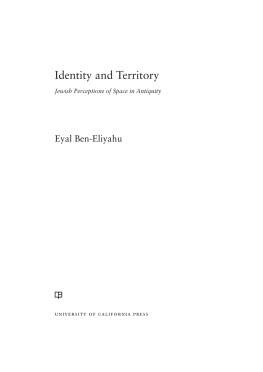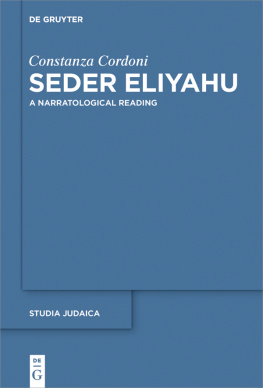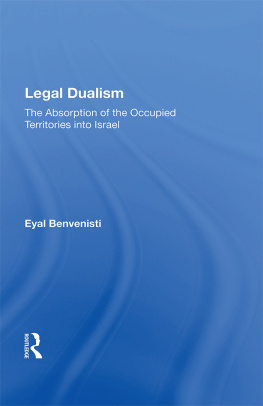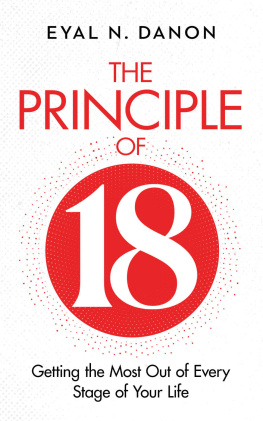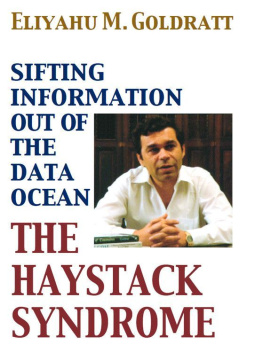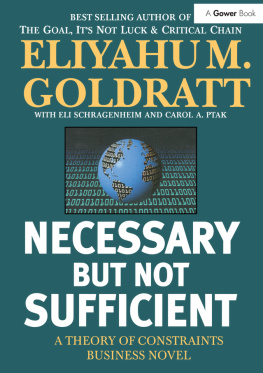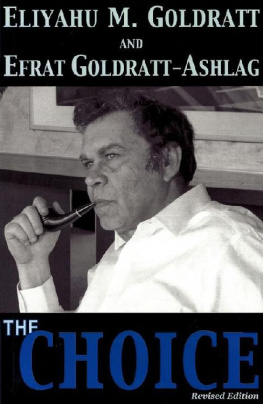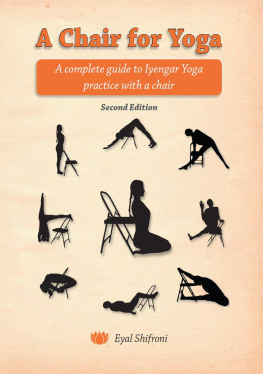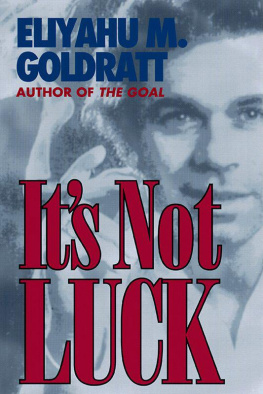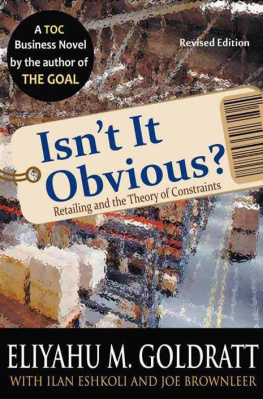Ben Eliyahu Eyal - Identity and Territory
Here you can read online Ben Eliyahu Eyal - Identity and Territory full text of the book (entire story) in english for free. Download pdf and epub, get meaning, cover and reviews about this ebook. publisher: University of California Press, genre: Religion. Description of the work, (preface) as well as reviews are available. Best literature library LitArk.com created for fans of good reading and offers a wide selection of genres:
Romance novel
Science fiction
Adventure
Detective
Science
History
Home and family
Prose
Art
Politics
Computer
Non-fiction
Religion
Business
Children
Humor
Choose a favorite category and find really read worthwhile books. Enjoy immersion in the world of imagination, feel the emotions of the characters or learn something new for yourself, make an fascinating discovery.
- Book:Identity and Territory
- Author:
- Publisher:University of California Press
- Genre:
- Rating:3 / 5
- Favourites:Add to favourites
- Your mark:
- 60
- 1
- 2
- 3
- 4
- 5
Identity and Territory: summary, description and annotation
We offer to read an annotation, description, summary or preface (depends on what the author of the book "Identity and Territory" wrote himself). If you haven't found the necessary information about the book — write in the comments, we will try to find it.
Identity and Territory — read online for free the complete book (whole text) full work
Below is the text of the book, divided by pages. System saving the place of the last page read, allows you to conveniently read the book "Identity and Territory" online for free, without having to search again every time where you left off. Put a bookmark, and you can go to the page where you finished reading at any time.
Font size:
Interval:
Bookmark:

THE S. MARK TAPER FOUNDATION
IMPRINT IN JEWISH STUDIES

BY THIS ENDOWMENT
THE S. MARK TAPER FOUNDATION SUPPORTS
THE APPRECIATION AND UNDERSTANDING
OF THE RICHNESS AND DIVERSITY OF
JEWISH LIFE AND CULTURE
The publisher and the University of California Press Foundation gratefully acknowledge the generous support of the S. Mark Taper Foundation Imprint in Jewish Studies. This book was also published with the support of the Israel Science Foundation.
Eyal Ben-Eliyahu

UNIVERSITY OF CALIFORNIA PRESS
University of California Press, one of the most distinguished university presses in the United States, enriches lives around the world by advancing scholarship in the humanities, social sciences, and natural sciences. Its activities are supported by the UC Press Foundation and by philanthropic contributions from individuals and institutions. For more information, visit www.ucpress.edu.
University of California Press
Oakland, California
2019 by The Regents of the University of California
Library of Congress Cataloging-in-Publication Data
Names: Ben-Eliyahu, Eyal, author.
Title: Identity and territory : Jewish perceptions of space in antiquity / Eyal Ben-Eliyahu.
Description: Oakland, California : University of California Press, [2019] | Includes bibliographical references and index. |
Identifiers: LCCN 2018038416 (print) | LCCN 2018042482 (ebook) | ISBN 9780520966789 | ISBN 9780520293601 (cloth : alk. paper)
Subjects: LCSH : SpaceReligious aspectsJudaism. | JewsIdentityHistoryTo 1500. | JudaismHistoryPost-exilic period, 586 B.C. 210 A.D.
Classification: LCC BM 729. S 76 (ebook) | LCC BM 729. S 76 B 46 2019 (print) | DDC 296.3/82dc23
LC record available at https://lccn.loc.gov/2018038416
Manufactured in the United States of America
26 25 24 23 22 21 20 19
10 9 8 7 6 5 4 3 2 1
For Hila
1a.
1b.
1c.
My weekly rides across the country from my home, in the Judean Desert, to my academic home at the University of Haifa are lengthy. At times, they extend from the Jordan Valley, through the Jezreel Valley and the Carmel. At times, I travel through Jerusalem, the Judean Plain, and northward to Haifa, with Samaria to the east and the Mediterranean coast to the west. This journey is always an opportunity to contemplate the meaning of space and its place within identityin the very landscape that shaped and was shaped by Jewish identity in antiquity.
This book is the product of an enduring interest in Jewish identitys territorial dimension in antiquity. In reality, the question of territorys interplay with identity accompanies daily life in Israeli society and is significant on the international plane as well. Studying early sources on the world of antiquity makes it possible to employ a perspective that is free of the contemporary element; however, we cannot disregard the fact that research is always conducted in a specific place and time.
My previous book, Between Borders: The Boundaries of the Land of Israel in the Consciousness of the People of the Second Temple and the Roman-Byzantine periods (Jerusalem: Yad-Ben-Zvi, 2014; in Hebrew) served as a basis for a number of the chapters in this book, primarily those that discuss the link between identity and the way in which the lands boundaries are perceived. But while my previous book analyzed the textual sources, the present volume contains a conceptual dimension; it closely examines the place of territory in Jewish perceptions in antiquity. This volume includes chapters that survey approaches to the land as geographical territoryboth on the part of diaspora Jewry during the Second Temple period and on the part of the rabbinic sages, living alongside the evolving Christian community. An additional new section studies the sages understanding of space, identity, and sacred sites against the backdrop of the world in which they lived.
I am pleased to be able to thank my teachers and colleagues, who have accompanied me for many years as I delved into the literature about the land of Israel and its world in antiquity. In writing this book, I consulted with a wide variety of scholars and colleagues and benefited greatly from their counsel. Their insight is an integral part of the volume, although the responsibility for what is written in the book is solely my own.
Daniel Schwartz read most of the volume, commenting and critiquing on it. Yair Furstenberg, too, devoted himself to reading and commenting on the manuscript. Oded Irshai, Hillel Newman, Aryeh Kofsky, and Serge Ruzer read the chapters that relate to the Christian world. Uzi Leibner critiqued a number of the chapters as well. My discussions with Chaim Ben David, Jonathan Ben-Dov, Micah Goodman, Nati Kupfer, Ora Limor, Fergus Millar, Vered Noam, Uzi Fuchs, Hanan Mazeh, Elchanan Reiner, Ishay Rosen-Zvi, and Israel Yuval caused me to reconsider and recalibrate a number of the ideas in the book again and again. Comments made by Gil Klein and David Goodblatt were very valuable. I owe a special debt of gratitude to Raanan Boustan for his wise comments, as well as for his friendship. My thanks to Ori Weisberg, who translated the manuscript. It was a pleasure to work with Deena Glickman, who edited the translation. Her efficiency and astute advice helped give the book its final form.
This book was published with the support of the Israel Science Foundation. I completed the book at the Herbert D. Katz Center for Advanced Judaic Studies. My heartfelt thanks go out to the center for its unique atmosphere and for the intellectual setting, which made conducting research a pleasure.
A trusted partner in my research and writing, my late father Shlomo read initial drafts of the book in his characteristically thorough manner. This volume is dedicated with love to my wife Hila, whose wisdom is permeates these pages, and to my children, Naama, Idit, Yael, and Gilad. Our lives together infuse meaning into the space in which we live; because of them, that space is an integral part of our identity.
I frequently find myself on the summit of the Mount of Olives, east of Jerusalems Old City and modern West Jerusalem. A visit to the mountain affords breathtaking views to the west. Spectators peer out over the Kidron Valley toward the site known to the English-speaking world as the Temple Mount. But different sightseers have different terms for what they see.
In recent years, various disciplines in the humanities and social sciences have undergone a revolution: history and identity are now viewed through the prism of space. This is the foreground and theoretical framework for the analyses in this book and for my discussion of the meaning of territory for Jewish identity in the ancient world.
Identity and Territory: Jewish Perceptions of Space in Antiquity examines the role of territory in postbiblical Jewish identity from the Second Temple period through the first centuries of the Common Era. The discussion revolves around two interrelated axes: the influence of territory on shaping Jewish identity throughout the period, and the way forms of this identity influenced the concept of territory in Jewish consciousness. This study explores the different Jewish approaches to the lands shifting boundaries and to the sites that were considered holy by diverse groups.
Font size:
Interval:
Bookmark:
Similar books «Identity and Territory»
Look at similar books to Identity and Territory. We have selected literature similar in name and meaning in the hope of providing readers with more options to find new, interesting, not yet read works.
Discussion, reviews of the book Identity and Territory and just readers' own opinions. Leave your comments, write what you think about the work, its meaning or the main characters. Specify what exactly you liked and what you didn't like, and why you think so.

